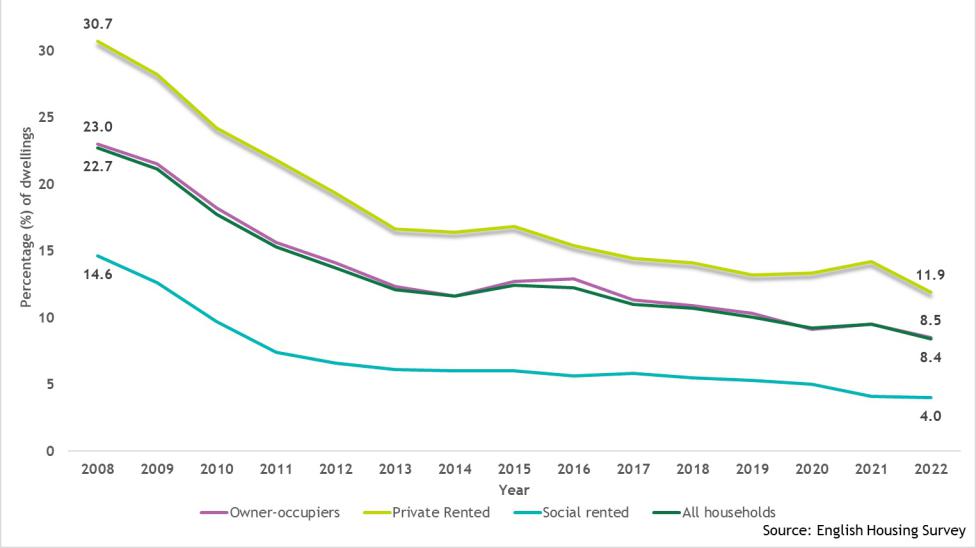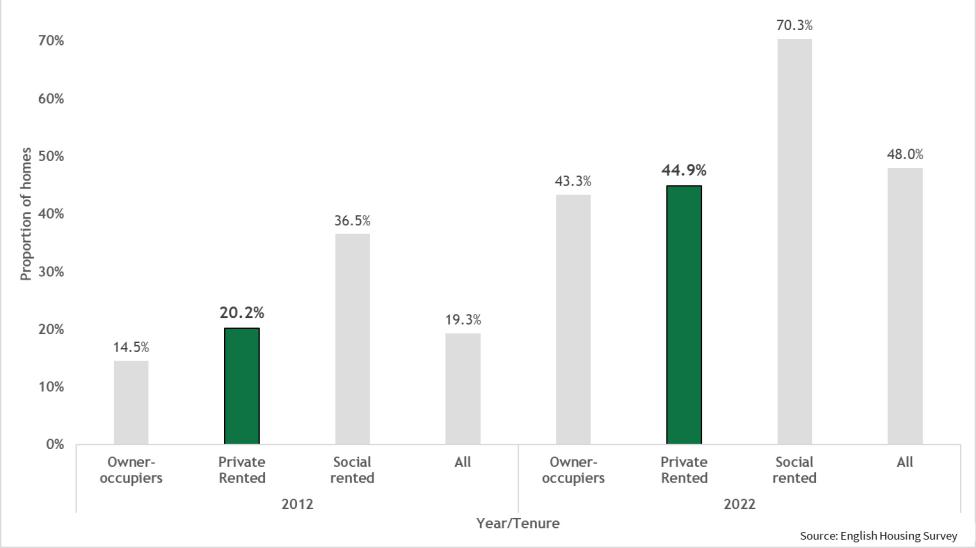Housing Standards
The NRLA Data Observatory is a collection of official and other well-established data sources which when combined, provide a narrative of the Private Rented Sector (PRS). The NRLA tracks approximately 45 key data sets which are updated monthly, quarterly and annually. A selection of these appear in these pages.
Our Deep Insight blog provides a regular extension of the analysis which appears here, as well as those datasets which are not published in the Data Observatory section of this website.
The blog pages also features blog posts from other organisations and academics to provide insight on the PRS. Here you can also find more in-depth summaries of our regular reports and surveys.
Safety hazards
Chart 1: Proportion of English households with CAT 1 hazards
Proportions of dwellings with "Category 1" hazards (HHSRS definition) by tenure

The 29 HHSRS hazards are classified as Category 1 (CAT1) if a hazard represents a serious and an immediate risk to a person’s health and safety.
- The proportion of PRS dwellings with a CAT1 hazard has fallen considerably since 2008.
- In 2022 the proportion of homes in the PRS with a CAT1 hazard fell from the previous year to just under 12%.
- Since 2008, the reduction in the proportion of homes in the PRS with a CAT1 hazard (61% between 2008 and 2022) has been in line with that of owner-occupiers (which has reduced 63% over the same period).
Energy efficiency - EPC rating
Chart 2: Analysis of energy efficient homes by tenure
Percentage of homes in England with an EPC of A/B/C by tenure (2012 & 2022)

The chart above reflects the progress and evolution of England’s housing stock as it becomes more energy efficient. An EPC gives you information about the energy efficiency of a property, as well as its heating source, estimated carbon emissions and estimated energy cost.
In 2007, just 6.9% of all dwellings in England were recorded in the EHS as being at Bands A-C. In 2022, as shown above, almost half (48%) of dwellings are.
- The PRS has similarly improved – in 2007 8.2% of all dwelling were EPC A-C, whilst 60% were at one of the lower E-G bands.
- By 2022 almost 45% of dwellings were EPC A-C.
- As the chart shows, this proportion has more than doubled in the last ten years alone.
- Just 12% of dwellings in the PRS are now in bands E-G.
